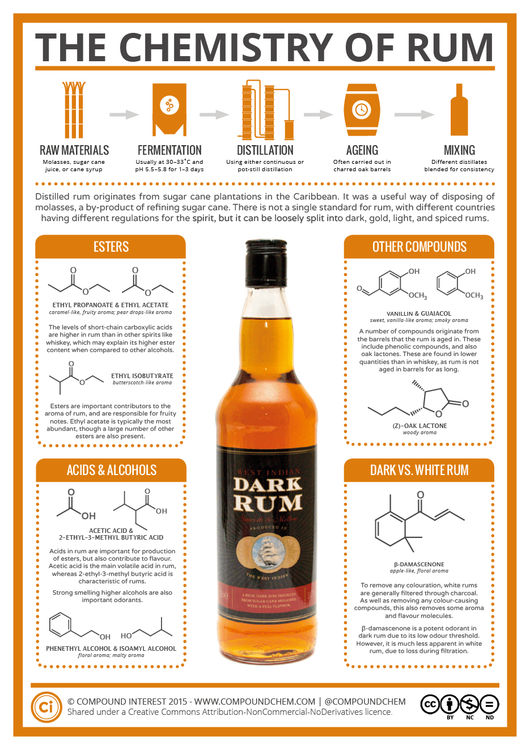© Compound InterestThe Chemistry of Rum
For the latest in the alcohol chemistry series, we’re looking at a pirate’s favourite spirit: rum. It’s actually hard to describe what constitutes a rum, because there’s not really a fixed definition; different countries have different standards that rums have to meet. Still, despite the differences in types, there’s still a lot of chemistry in common.
Rum originates from the process that gives us sugar. Sugar cane has to be processed to produce sugar, and this processing produces a syrupy fluid known as molasses. Back in the 1600s, this was a problem in the sugar cane plantations of the Caribbean, as they didn’t have any real use for these molasses. They didn’t have any nutritional or monetary value. However, the colonists quickly discovered that, if water was added, the resulting material could easily be fermented to produce alcohol. Suddenly, a useless byproduct was a valuable precursor to rum.






